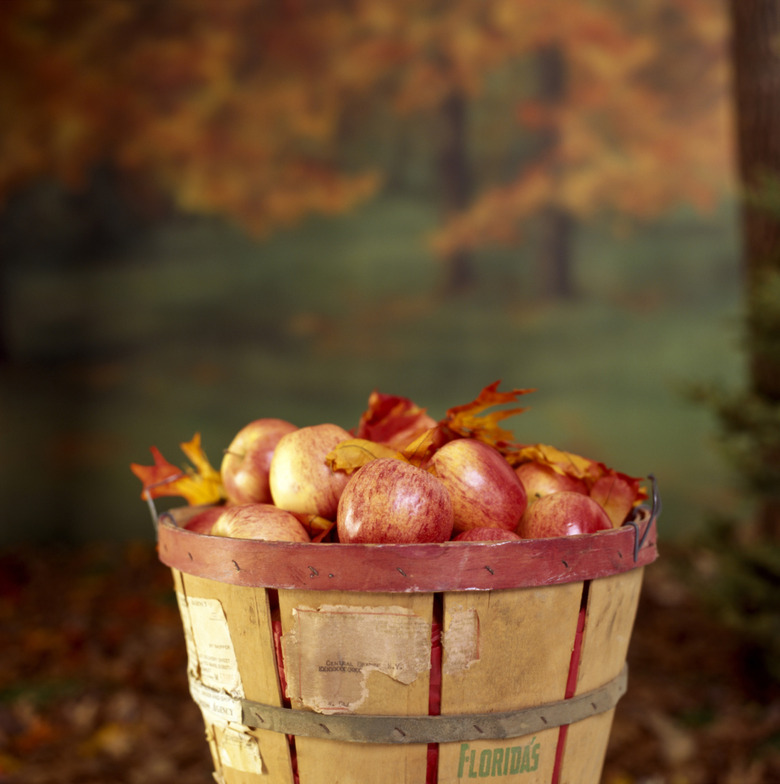Should You Wait Until A Freeze Before Picking Apples?
Step 1
There are more than 6,000 varieties of apples, many developed for specific climates or purposes. If a home orchard keeper planted the right varieties together, he would have fresh apples for months. Some of the earliest ripening apples don't require a long winter chill and are generally planted in the warmer climates of the southern United States; Dorsett Golden and Anna are varieties that can ripen in early June. On the other end of the spectrum are the late-ripening apples such as Granny Smith and Pink Lady.
Ground Color
Step 1
Ground color is the best indication of the ripeness of an apple. Regularly examine your apples once they've reached a good size, watching for the green background color to turn to a golden color. This is more difficult on red apples, but thin spots in the red pigment can be checked — look for ground color inside the depression on top of the apple, the bottom of the apple or the side of the apple that faces the tree.
Step 2
- There are more than 6,000 varieties of apples, many developed for specific climates or purposes.
- Some of the earliest ripening apples don't require a long winter chill and are generally planted in the warmer climates of the southern United States; Dorsett Golden and Anna are varieties that can ripen in early June.
Other Clues
Step 1
If after looking at the ground color you still cannot tell if your apples are ripe, cut one open and check the seeds. A ripe apple has brown seeds; an unripe apple has pale or white seeds. A ripe apple often develops a waxy coating and always has a sweet flavor. You will not get sick from eating an unripe apple, so feel free to cut one down from time to time and check the tartness. Pick an apple from the tree by bending upward quickly — a clean break can also indicate ripeness.
Freezing Temperatures
Step 1
Some food plants, such as brassicas, are often improved by a light frost or even a freeze. However, apples are not improved by freezing conditions. In an apple, the sugars accumulate during bright, warm days that are followed by cool nights. Sometimes these conditions may produce a light dusting of frost, but the frost itself has no effect on the apples. At around 22 degrees Fahrenheit, the cells of the apple fruit accumulate ice crystals, which puncture the cell walls of the fruit. Once the fruit thaws, the dead cells collapse, causing internal browning.
Step 2
- If after looking at the ground color you still cannot tell if your apples are ripe, cut one open and check the seeds.
- Pick an apple from the tree by bending upward quickly — a clean break can also indicate ripeness.
References
- Texas A&M AgriLife Extension; Home Fruit Production — Apples; Larry Stein, et al.; April 2003
- Cornell University Cooperative Extension: When to Harvest Apples
- University of Nebraska Lincoln Extension; Harvesting and Storing Apples; Mary Jane Frogge; September 2005
- University of Idaho Extension; Harvesting Apples; Brian F. Finnigan
